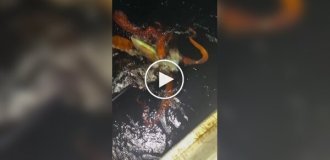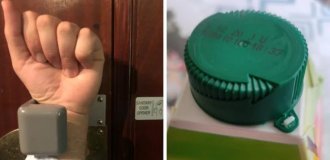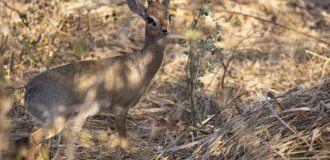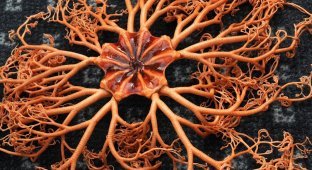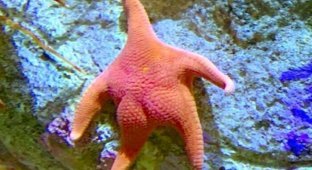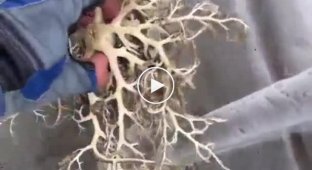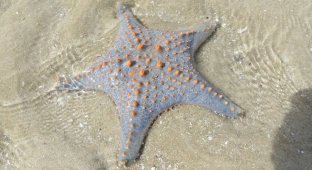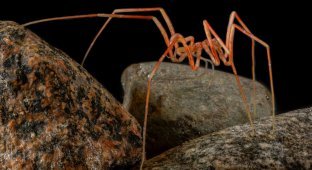Ophiura: a bizarre thousand-armed something from the depths (9 photos)
Brittle stars are a class of bottom marine animals from the echinoderm type, including about 2,000 species. They have long processes with which they move along the bottom. 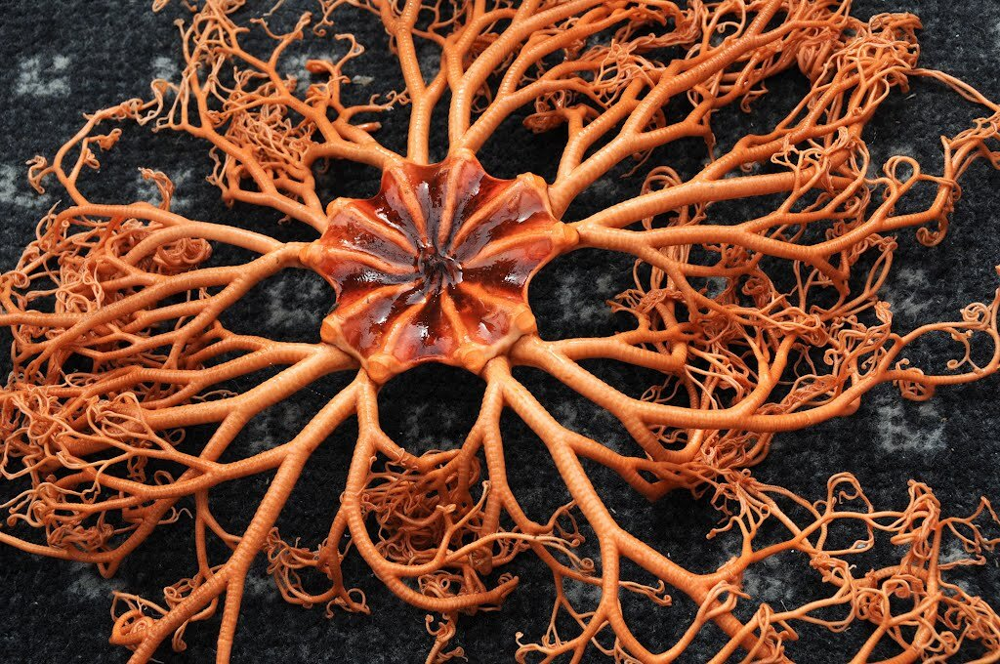
Let me introduce you to the brittle star, the starfish's sister, who has done something strange with her rays.
However, it would be a stretch to call them sisters. The evolutionary paths of these two groups diverged more than 460 million years ago, when fish were not even in the picture. Of course, during this time the animals managed to accumulate a whole bunch of differences both in lifestyle and in appearance. 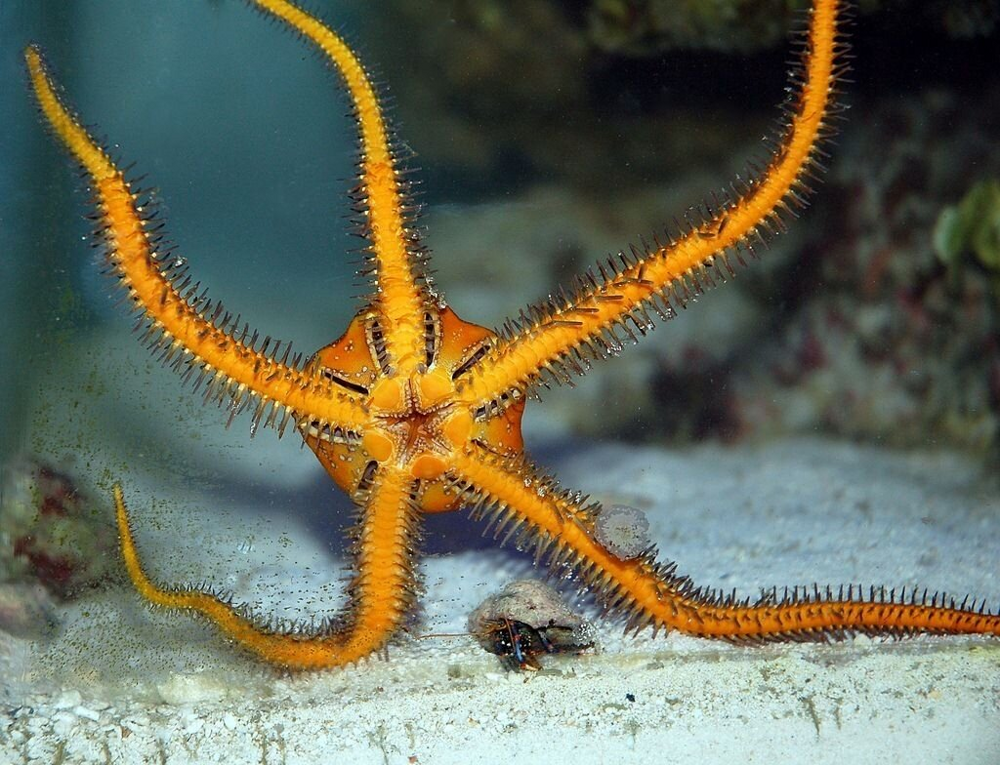
Hello, starfish! Haven't seen each other for 400 million years! The photo shows one of the varieties of brittle stars.
The main difference lies in the rays. In starfish they are thick and inactive. But from afar, the processes of brittle stars resemble writhing worms up to 70 centimeters long. It doesn't sound very attractive, but that's not all! Some species of echinoderms go even further: their limbs branch out, turning into complex and strange bushes! 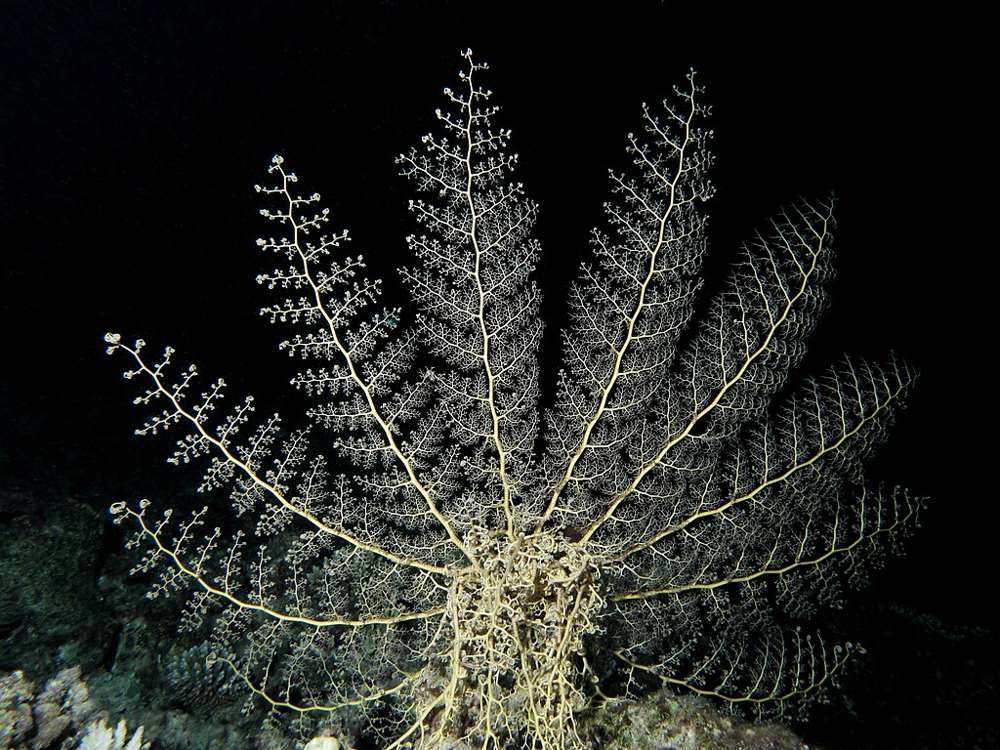
Well, yes, a relative of the starfish. Almost indistinguishable!
The basic task of the flexible limbs is to move the passive torso along the seabed at depths of 5 to 6,000 meters from the surface. Nature has not endowed brittle stars with muscles, so the creature moves its legs using hydraulics. A system of vessels is hidden inside the brittle star’s body, and in the rays there are folding legs that stretch when water is pumped into the vessels. Thanks to simple physics, brittle star has become the racer of the echinoderm world - no sea urchin or starfish moves as fast! 
This is one of the brittle stars' rays. She moves thanks to thousands of little ghostly legs!
Working with its paws, the brittle star not only moves, but also obtains food. For example, the genus Gorgonocephalus, instead of normal rays, grows a whole bush with branches of tiny limbs. Each shoot sifts sand or filters water, extracting the smallest organic matter. 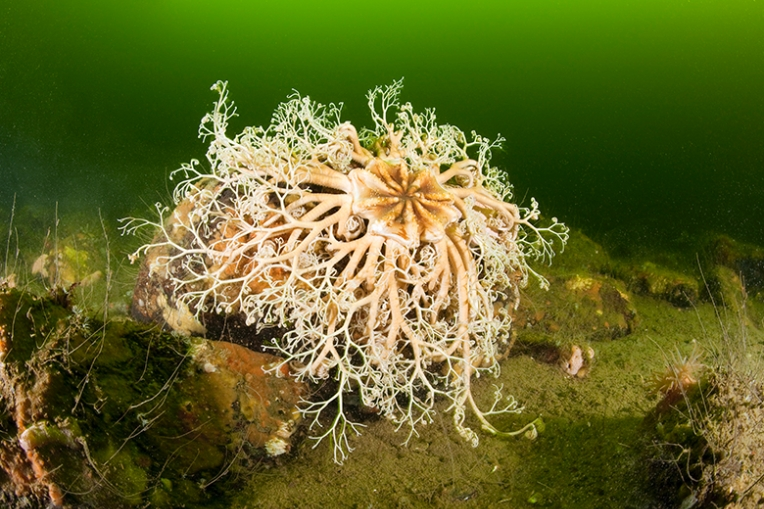
But most species of darter prefer to gnaw carrion, algae, corals and mollusks using several pairs of jaws. Brittle stars slowly overtake their motionless prey, lazily gnaw at it and leisurely move on. 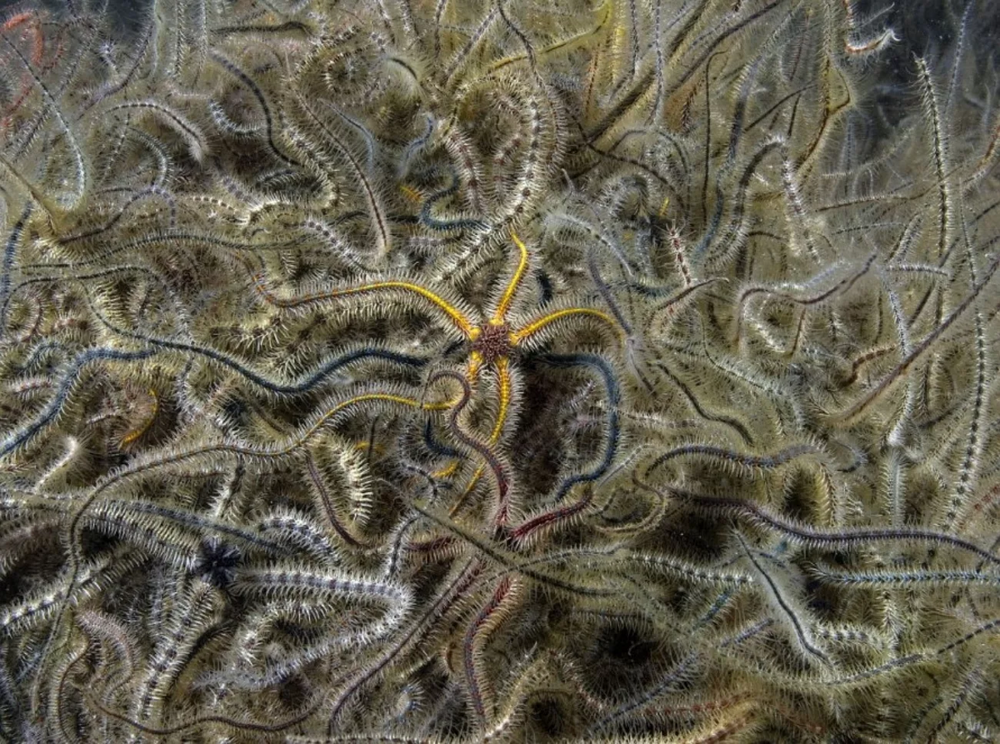
All brittle stars from the surrounding area are collected on the remains of large animals. They are laid in a multi-layer and extremely dense carpet.
Yes, brittle stars look strange in appearance. But inside it's even weirder. They have no hint of the usual structure of organs. Instead of a brain, these invertebrates use a ring of nerves that encircles the entire body. The circulatory system consists of only two vessels and a small heart-bubble. But the intestines are almost normal, except that the anus is missing. The poor invertebrates have to throw out waste directly through their mouths. 
Reproduction is also not without its nuances. After all, when a group of organisms has been around for half a billion years and consists of more than 2,000 species, evolution has time and place to experiment. The basic option is this: dioecious snaketails secrete sexual products into the water. There the sperm find the eggs, after which the larvae, ophiopluteus, appear. They swim for a while in the company of zooplankton, after which they precipitate and turn into adult animals. 
Ophioplutheus is very difficult to photograph. But please sketch it.
And an awful lot of funny things have been built on this basis. Some brittle stars turned into hermaphrodites, others learned to divide in half. And especially advanced ones even store fertilized eggs in bursae - special genital bursae, in peace and safety! 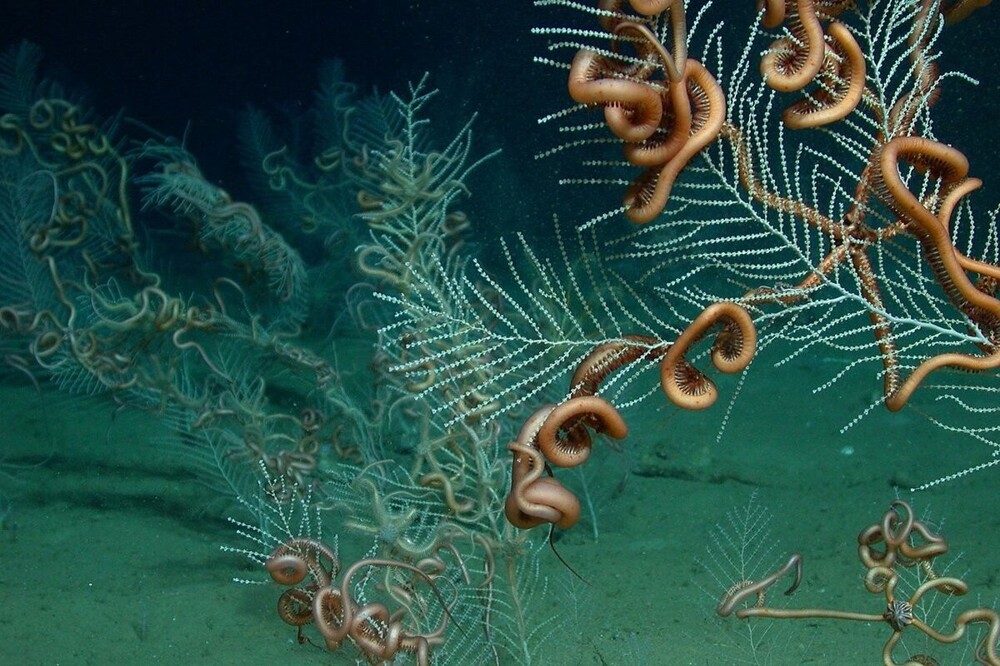
And these young brittle stars generally parasitize corals.
Yes, brittle stars are creepy. These are gloomy, slow creatures that gnaw other people's remains from the bottom of the ocean. But they are also terribly useful! It is these animals that process carrion and control populations of small organisms. Helpful guys!
